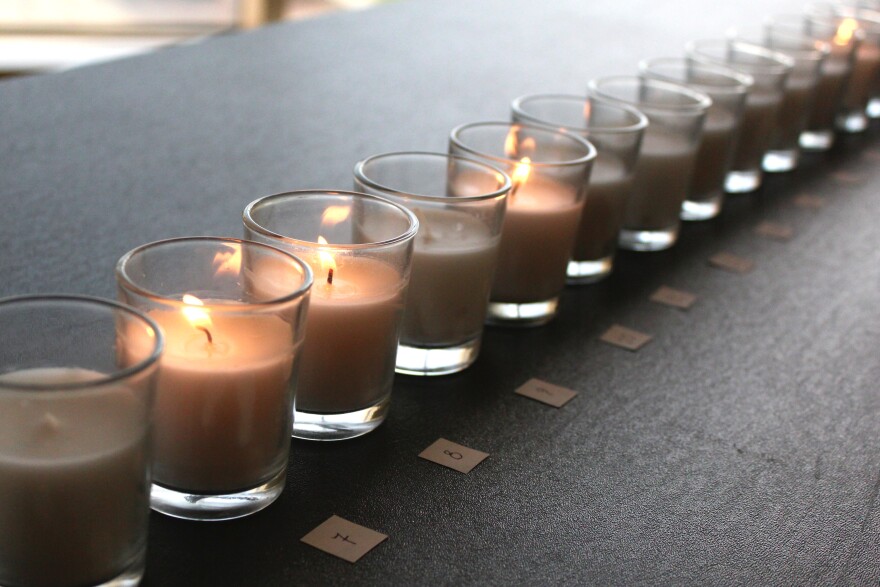For almost a decade students from Washington University School of Medicine’s first year gross anatomy class have held a ceremony honoring their “first patients.” These patients are people who donated their bodies to the medical school for this purpose.

First year medical student, Jorge Zarate, 22, respects the knowledge he’s gained from learning anatomy from a cadaver and wants to honor the people who donated their bodies.
“I think the best way I can do them justice is by trying to become the best physician I can be and that this investment they have made in me goes to help other people,” said Zarate.
The ritual began roughly a decade ago at the suggestion of Dr. Glenn Conroy and Dr. Jane Phillips-Conroy, who teach the class. At this year’s ceremony students set up a table with candles, one lit for each body that was worked on throughout the class. Approximately 60 students attended the ceremony, dressed in ties, button-downs, slacks, dresses, and a few in lab coats.
The “appreciation ceremony” or “memorial” included poems and written reflections read to the gathered class. A group of musicians performed a cover of Green Day’s “Good Riddance (Time of Your Life)” in honor of their patients. Students exchanged stories from the class at a reception held after the ceremony.
Lyndsey Cole, 23, is a second-year medical student. She intends to specialize in psychiatry but felt the anatomy class influenced her future practice in the mental health field. For Cole, considering the internal workings of a body reflects the workings of the mind.
“It makes you get to know what your future patients are going to be like in a way that you never could in any other way,” she said.
Listen to one student's reflection
Drs. Conroy and Phillips-Conroy view the ceremony as a way to acknowledge an experience that will shape their students forever.
Conroy says anatomy is the foundation of the medical practice.

“Whether you deliver a baby, whether you’re doing surgery, whether you’re delivering anesthetic, almost any procedure you do if you’re actually a physician with hands on a patient, you’re doing some sort of anatomy,” he said.
According to Phillips-Conroy, the cadaver donations touch more people than just the students’ lives.
“By giving them that opportunity and gift of learning about the human body, they will be helping many many people in the future,” she said. “They have given them the access to knowledge that could never have been gained in any other way.”
Approximately 18,000 bodies are donated to science each year, a portion of which go to medical donations.
For more information on donations:


